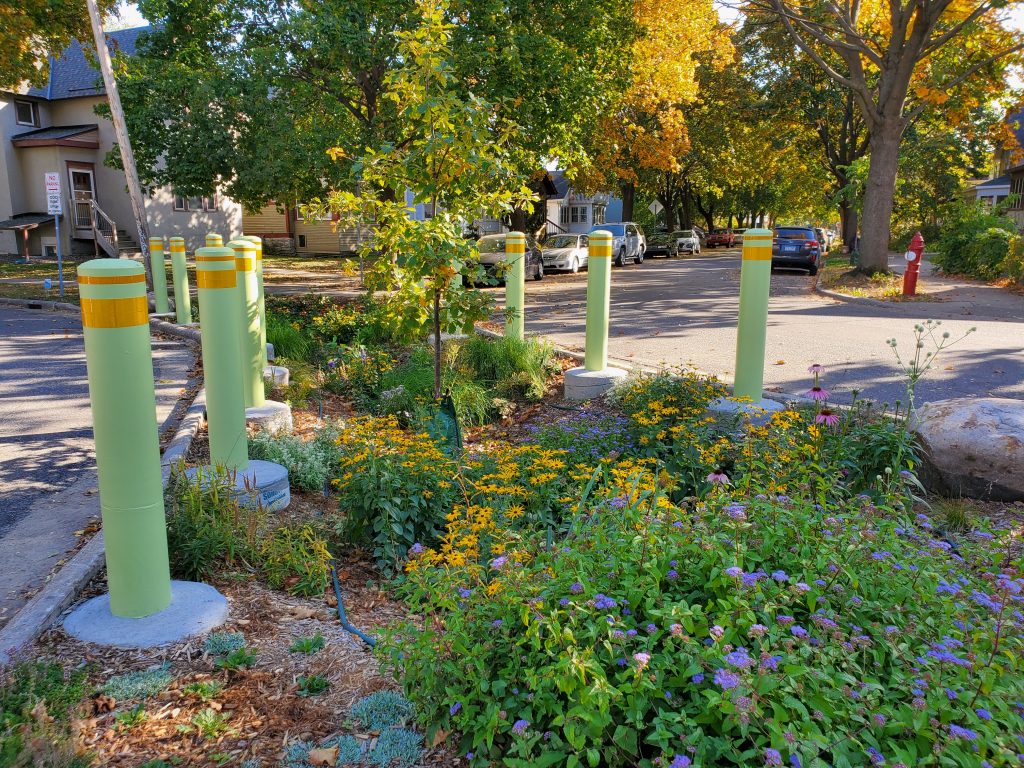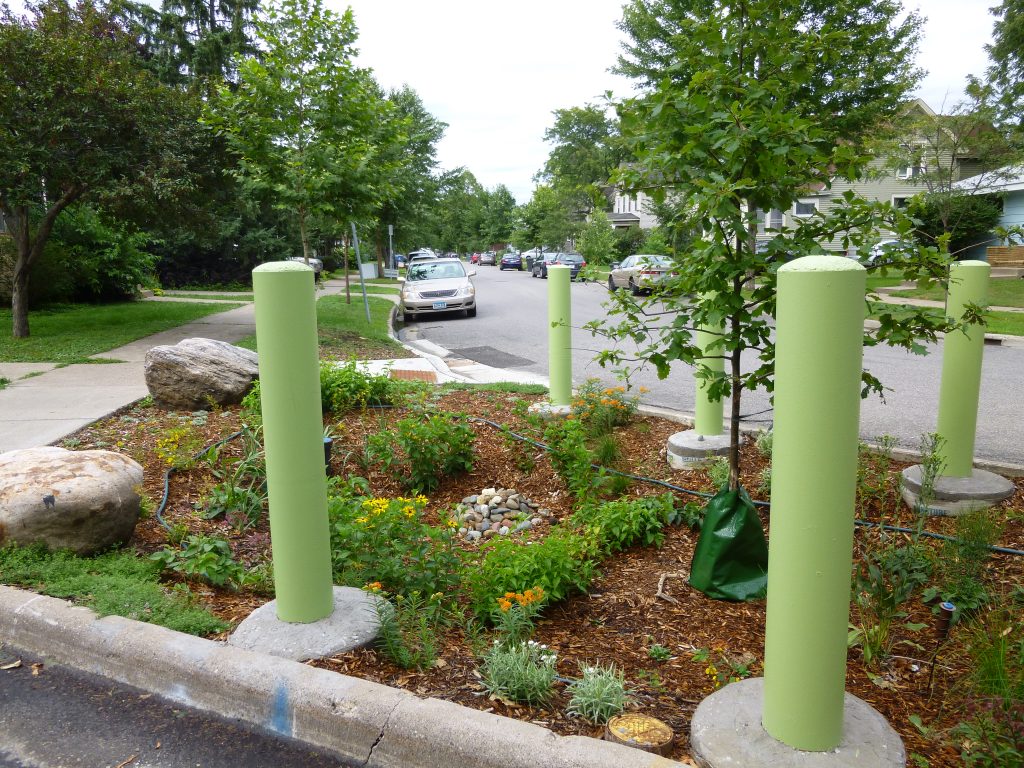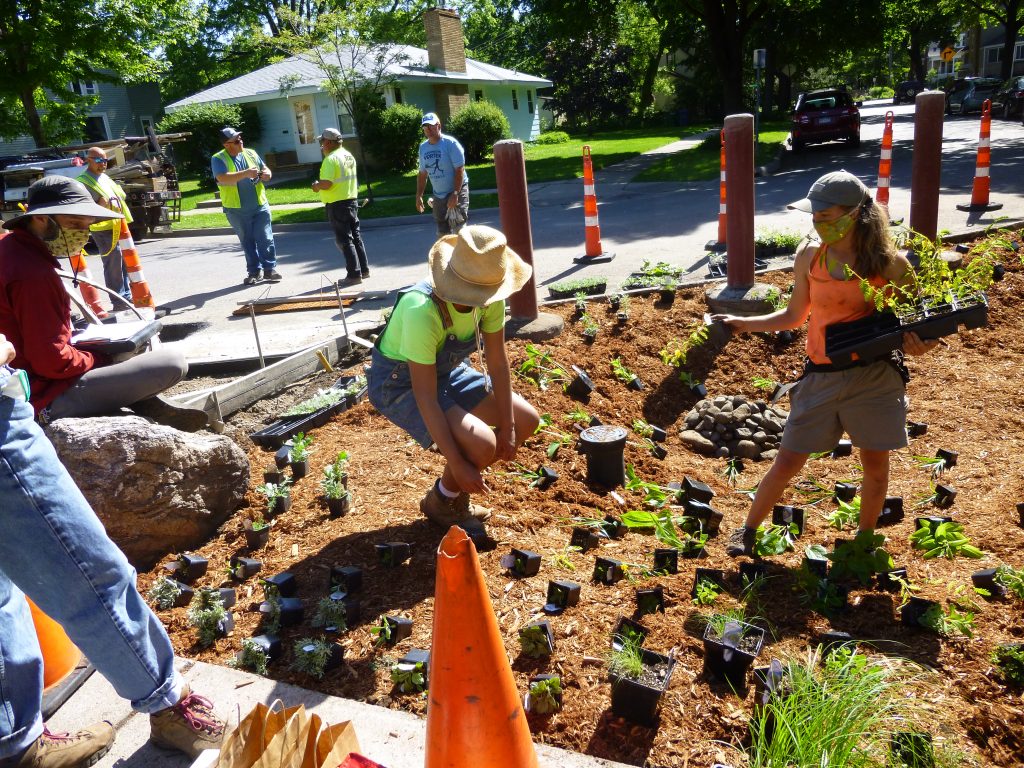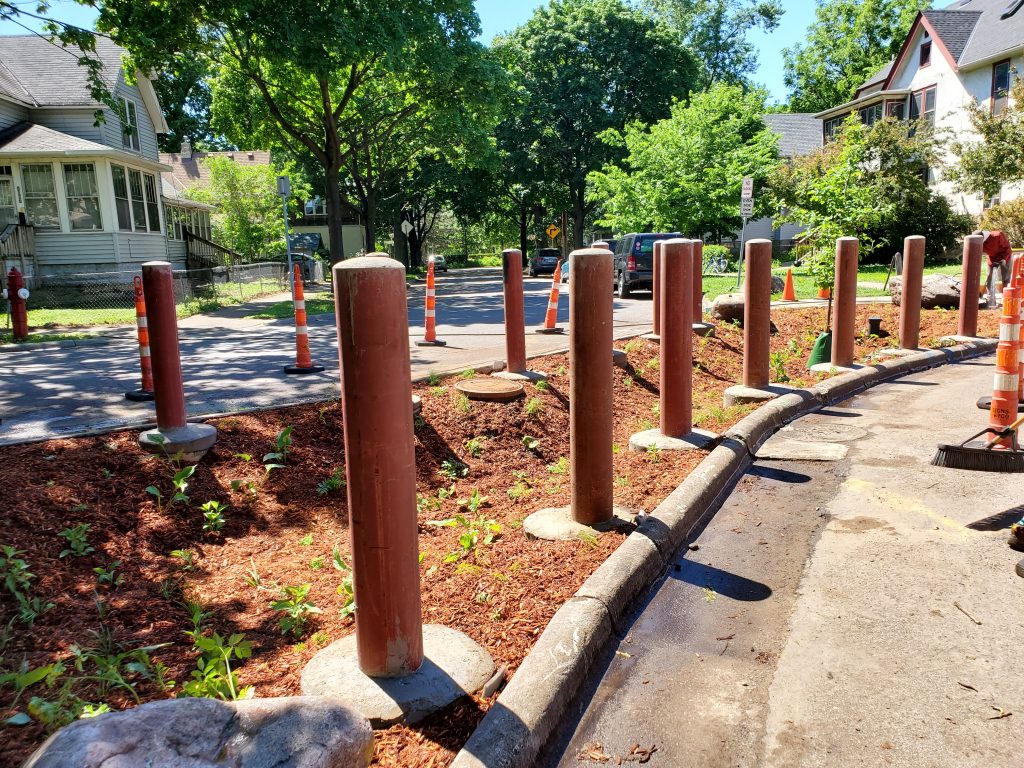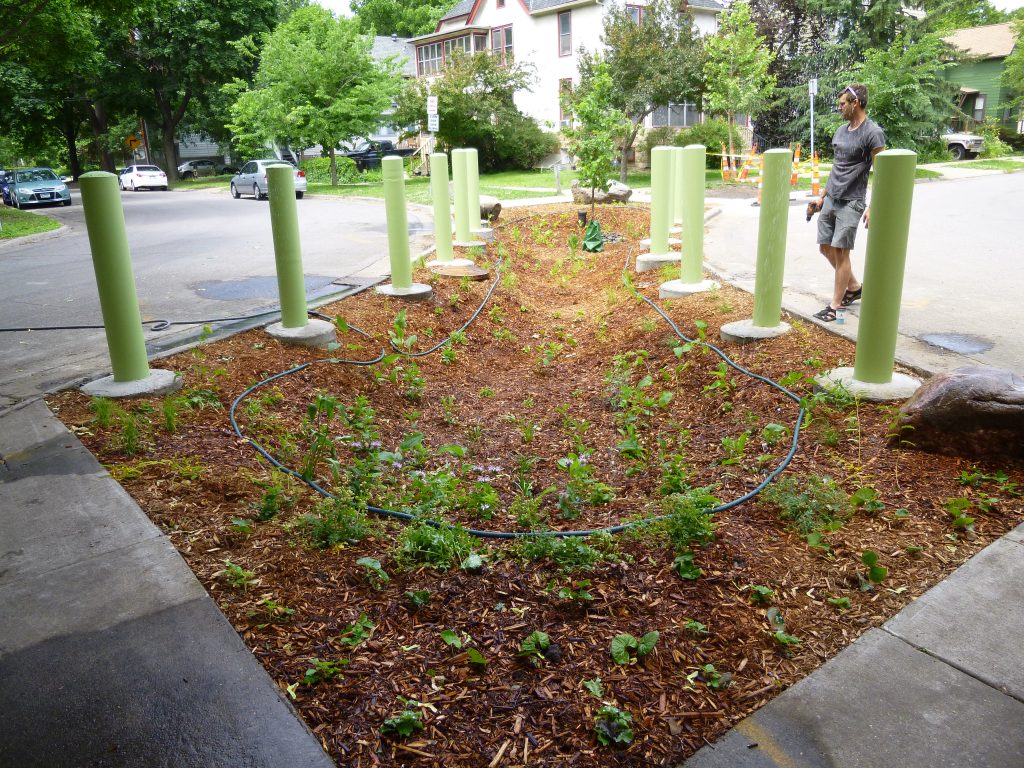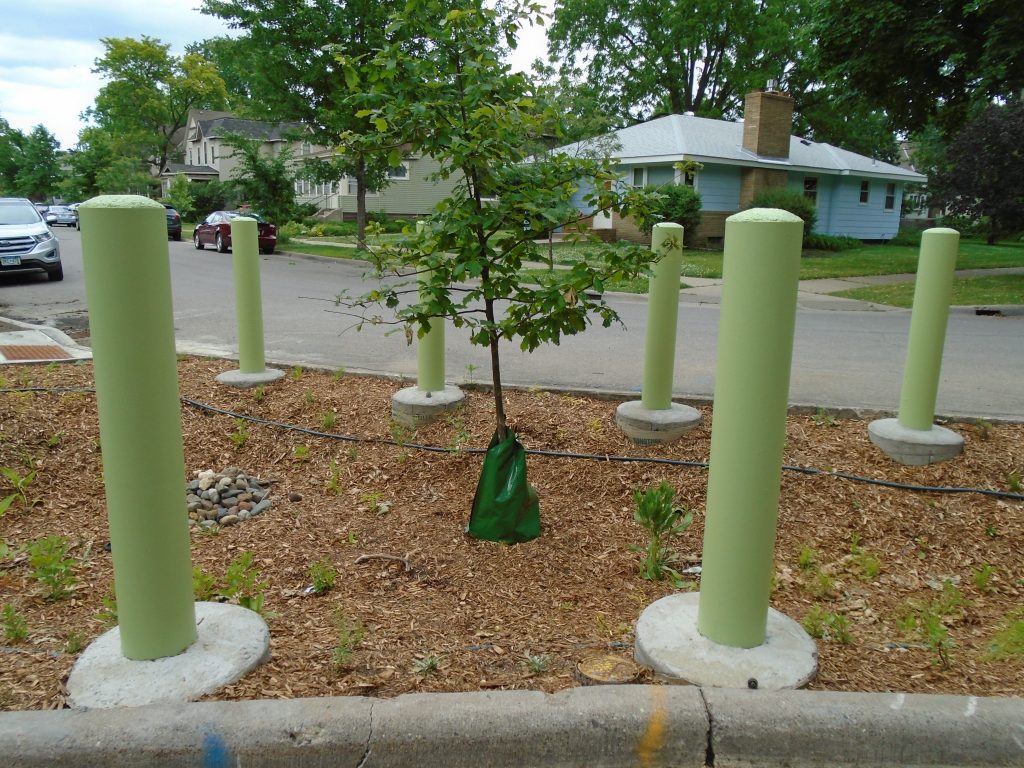New Garden on 15th & Talmage Diverter
During our 2020 gardening season, we completed our rain garden project on the 15th & Talmage traffic diverter. This garden is a beautiful addition to our city and will filter thousands of gallons of water going into our ecosystem.
This project was possible thanks to…
- The Mississippi Watershed Management Organization for the grant to install the garden.
- Minneapolis Public Works for the infrastructure work
- Minneapolis Park and Recreation Board for the swamp white oak and for clearing the old weedy vegetation and trees
- Metro Blooms staff for the meticulous landscaping and installation work
How We Changed a Mountain into a Rain Garden and What We Learned along the Way
No, we didn’t start out planning to build a rain garden. We just wanted to cleanup some ugly traffic diverter berms (not real mountains). But a funny thing happened on the way to a weeding project. We learned a better way.
Background
About 2016, the Livability Committee of the Southeast Como Improvement Association (SECIA) was going over its list of project ideas. One of those ideas was to clean up the five diverter berms the City had installed in the neighborhood in the 1970s to cut down on traffic through our residential streets. Drivers were trying to avoid stoplights when going between East Hennepin Ave and Como Ave, so the City closed off intersections by installing berms across them – piles of dirt planted with trees and shrubs and then a fence placed across the top with reflectors to alert night-time drivers.
They probably looked good at first. But time happened. The trees grew, or died. The shrubs overgrew, or died. The fences deteriorated, their reflectors often blocked by shrubs. Weeds and buckthorn moved in. And not many people seemed to care. Granted, there were some neighbors who spent time weeding and planting flowers to improve the looks of the diverter nearest them, but in general the diverters were ignored.
The Livability Committee wanted to get the diverters cleaned up but needed help. They first tried recruiting cleanup help among student groups, but that didn’t work out. Then Jan Morlock of the U’s Community Relations Office connected Livability with Professor Gary Johnson at the Department of Forest Resources – who offered our ugly diverter berms as a research project to his Urban Forestry Capstone Class – and five members of that class took it on! And they worked – viewing the diverters, talking to the neighbors, studying the possibilities, and making recommendations. And their primary recommendation was – turn the diverters into rain gardens – and they reported their process, data, benefits, and reasoning in a 40-page document.
Livability now had a new goal, not just clean up but transform. We formed a steering committee – one Livability activist, two gardeners, one tree expert, and one interested diverter neighbor. The committee chose one diverter as a pilot project.
Now we knew we needed expert help, so we went to our local watershed district – the Mississippi Watershed Management Organization (MWMO). We applied for an MWMO mini-grant to develop a raingarden design plan for the pilot diverter site. We hired Metro Blooms to do the analysis and design. We also held public meetings to present the design and we promoted the potential rain garden development at local events. And meanwhile we were talking with our City Council Member, the City of Minneapolis Public Works Department (PWD), and the Minneapolis Park and Recreation Board (MPRB) and building consensus there. We were on a roll. Click here to check out the original garden plan.
In 2019 we put it all together and submitted an Action Grant application to MWMO – it included a lot of matching funds/work from the PWD, MPRB, and a local donation for safety barriers. We got it! And we did it! Our pilot diverter rain garden was done in the spring of 2020! Here it is during its first summer of growing.
And Here is What We Learned
-
- Persistence works
- Find the right partners
- Find the right experts
- Get advice in writing
- Identify benefits
- Need data to apply for grants
- Find the right financial backers
- Values should align with project
- When working on public property, get all involved parties involved. In our case:
- City Council person
- City of Minneapolis Public Works Department
- Minneapolis Park and Recreation Board Forestry Department
- Keep everyone in the information loop – communication, communication, communication
- Work with community members
- Set up informational meetings, presentations
- Develop email group of supporters
- Use neighborhood newsletters to inform all
- Use local events and door knocking for further communications (virtual or actual)
- Remember not everyone will agree with you
